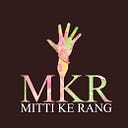SACRIFICE OF 4 SAHIBZADE
The story of the Sacrifice of Shaibzade is associated with the religion of Sikhism. It was born in the Punjab area of South Asia when the main religion around the subcontinent was Hinduism and Islam. Guru Nanak Dev started around 1500 CE the time when the people are confused as well as frustrated with the customs, practices, and class divisions in the religion.
Sikhism was providing the people to get rid of all these customs by developing a belief of secularism. It is needed for the people to fight against the division of classes. And in the country to fight against the evil forces that are making the country weak.
The term Sikh has its origin in the word śiṣya (शिष्य), meaning ‘disciple’ or ‘student.’
According to them, a person is Sikh if he faithfully believes in One Immortal Being; eleven gurus, from Guru Nanak to Guru Granth Sahib; the teachings of the 6 Gurus, 15 bhagats, 11 bhatts, 4 Gursikhs, and the baptism bequeathed by the tenth Guru.
The story of sacrifices is the stories of bravery and honour.
According to them,
“It’s better to lie out life while fighting like a Lion rather than living like a sheep for the whole life.”
Out of 10 Sikh gurus, two gurus were tortured and executed, several gurus brutally killed sons, along with numerous other revered figures of Sikhism were tortured and killed by Mughal rulers for refusing their orders and for opposing the persecution of Sikhs and Hindus.
The story of the sacrifices of 4 shaibzade is the story of the bravery where the four children of ‘Guru Gobind Singh’ leader of the Sikhs in the Punjab region of the Indian subcontinent during the Mughal empire. He created an elite warrior band of initiated devout orthodox Sikhs to protect the innocent from religious persecution known as ‘Khalsa’ on 30 March 1699. It also refers to Sikhism as its faith and is considered a key event in the history of Sikhism.
He has four sons Ajit, Jujhar, Zorawar, Fateh, and was executed by Mughal forces before the age of 19.
They honour the illustrious martyred sons of Guru Gobind Singh in the prayer of ardas for their bravery and sacrifice as “Char Sahibzade”, the four princes of the Khalsa warrior order.
Their story starts with Ajit Singh who at the age of 12 drank the immortal nectar along with his family on the first Vaisakhi Day, on 13 April 1699, at Anandpur Sahib. He fought his first battle when he was only 12 years of age and was martyred at the age of 18, on 7 December 1705 CE at Chamkaur, after he volunteered to leave the besieged fortress with five Singhs and face the enemy on the battlefield.
Jujhar Singh, the second fearless son who like his brother, sacrificed his life, fighting for a noble cause. He was martyred at the age of 14, on 7 December 1705 CE at Chamkaur, where he earned the reputation of being likened to a crocodile for his fierceness in battle when he volunteered to leave the besieged fortress with five of the last Singh’s standing, and all achieved immortality on the battlefield.
Zorawar Singh and Fateh Singh were nine years old and seven years old respectively, when they attained martyrdom. They were imprisoned with their grandmother and put to death by cruel Mughal rulers who attempted to suffocate them inside a brick enclosure.
This tradition of martyrdom does not employ “physical death” but embodies moral and spiritual significance.
Guru Nanak says, “The death of heroic men is holy, should they lay down their lives for a right cause.”
Sikhism has a long history of Shahidi or martyrdom, which is regarded as a supreme sacrifice for the right cause.
Contributed by Abhay Rawat, Content writer at Mitti Ke Rang
Our Social Media:
Website: https://www.mittikerang.org/
LinkedIn — https://www.linkedin.com/in/mitti-ke-rang-mkr-81b230120/
Twitter: https://twitter.com/mitikerang?s=08
Instagram: https://www.instagram.com/mitti_ke_rang?r=nametag
Facebook: https://www.facebook.com/Mitikerang/
YouTube:
